You’re on a run through the city or a local park and you come upon a low obstacle in your path. Maybe it’s a waist-high wall, a railing, or a large log, and you realize that it’s too high to safely hurdle. What do you do? Rather than stop your forward momentum and climb over it, your best option is to perform a simple vault and continue moving.
For lack of a better description, a parkour vault is a method of getting over a low obstacle, using one or two arms for support, in such a way as to conserve your forward momentum. Vaults are the most efficient method for getting over a low obstacle that you couldn’t simply hurdle or jump over. Whether you just want to be faster in your next obstacle race or are more serious about practicing parkour, there are a few basic vaults that must be in your skill set.
The vaults that you’ll see in this article are ideal for obstacles that range in height from mid-thigh to about your rib cage. If something is taller than that, you’ll want to use a different type of vault or maybe even climb up and over. We’ll talk about techniques for those situations in later articles.
Before moving on, it’s important you dispel the notion that parkour vaults are the same as gymnastics vaults. They are not. Gymnastics vaults use a different type of approach and result in throwing your body wildly through the air. The goal of parkour is safe and efficient movement through an environment, so you’ll actually be aiming to keep your center of mass as low as possible. Certain elements, such as how you stack your arms on an obstacle, can be similar to how a gymnast would block their shoulders on the vault horse, but for the most part, the two vaulting styles are completely different beasts.
One last thing before we move on to the fun stuff: safety. It’s critical that you know the environment where you will be training. If you are outdoors, inspect the ground for loose debris on the run to and away from the obstacle. Likewise, is the top of the obstacle wet, abrasive, or dangerous for some other reason? If you’re training indoors, be careful to prevent your obstacle from moving or tipping over. Take a few moments to eliminate as many hazards as you can.
The three beginner vaults that you will see below are called the step vault (aka safety vault), the lazy vault, and the speed vault. The step vault and the speed vault are similar in that they are both used for getting over an obstacle that you approach head-on. The lazy vault is unique in that it is used on an obstacle you approach along the side, in a parallel line.
Step Vault
- Place one hand on the obstacle and begin to shift your weight forward, through your shoulder and down your arm.
- Push off your feet and lift your opposite leg (the outer one), to place the ball of your foot on the obstacle.
- You should momentarily be balanced on the obstacle between one hand and the opposite leg, with both the palm and foot as flat as possible.
- Step your inner leg through the plane of your body, and reach forward to touch the ground.
- Shift your weight completely to the ground, release your hand from the obstacle, and continue stepping forward.
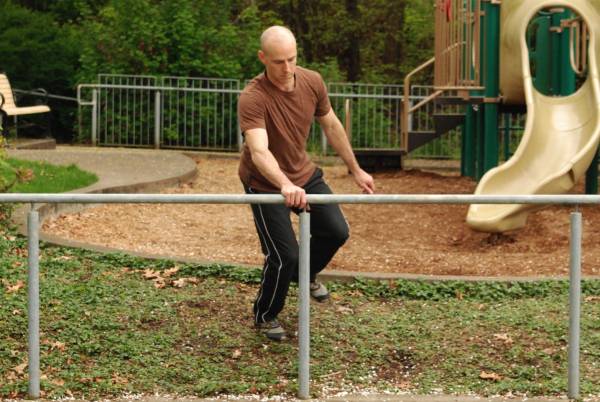
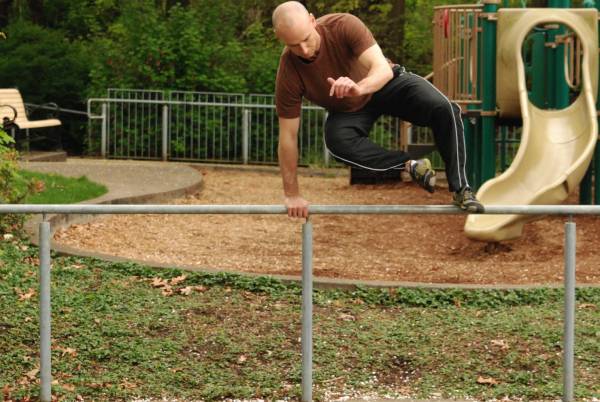
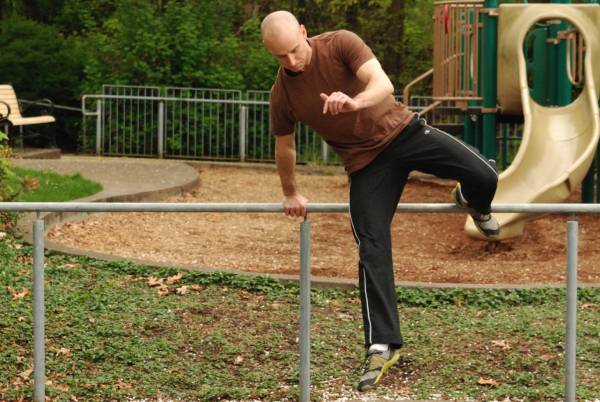
Lazy Vault
- Position your body perpendicular to the obstacle, as if you were walking or running alongside it.
- Place your closest hand on the top of the obstacle and begin shifting your weight sideways and down the arm.
- Kick off from the ground and swing your inner leg up and over the obstacle.
- Lift and swing your outer leg, trailing the motion of the first leg.
- As your second leg clears the edge, place your free arm on the obstacle, transferring support from the first hand.
- Make contact with the ground, release your hand, and continue to move forward along the obstacle.
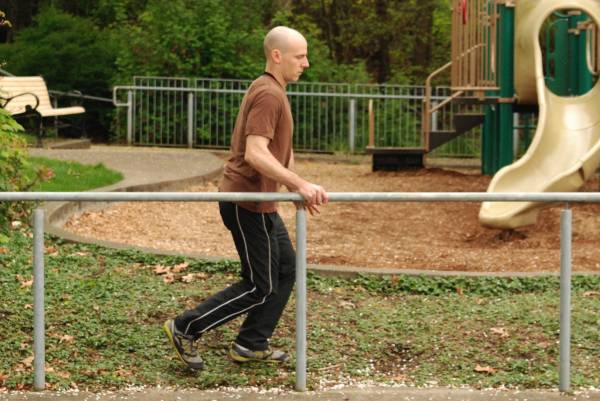
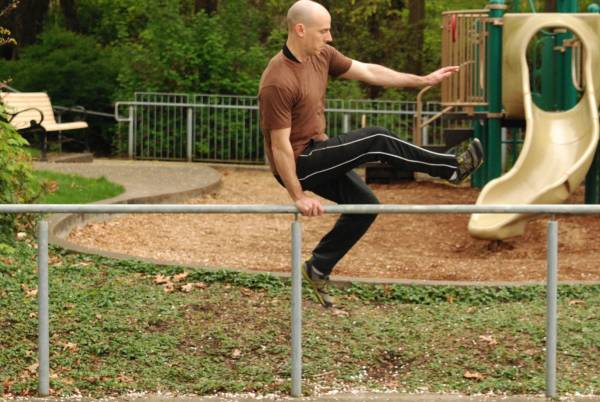
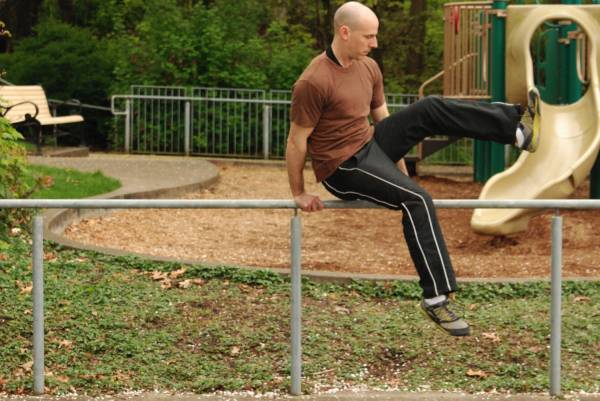
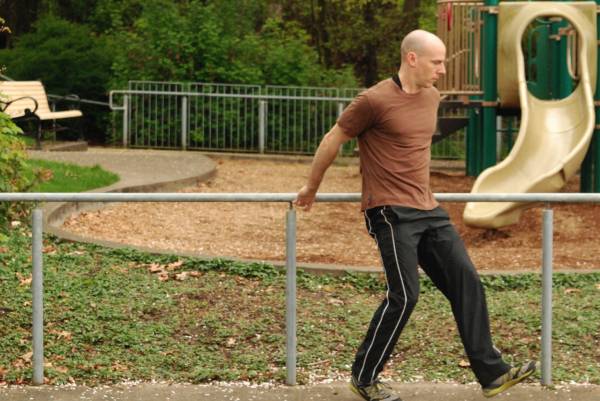
Speed Vault
- Approach the obstacle in a direct line, with greater velocity than the step vault.
- Reach one arm forward, place your hand flat on the top of the obstacle, and shift your weight off your feet into your shoulder.
- Launch your body off the ground and kick your outer leg sideways as you go over the obstacle.
- Reach your inner (bottom) foot to the ground, release your hand, and continue stepping forward.
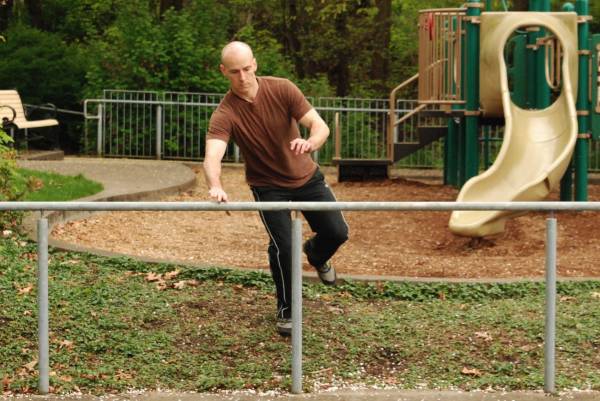
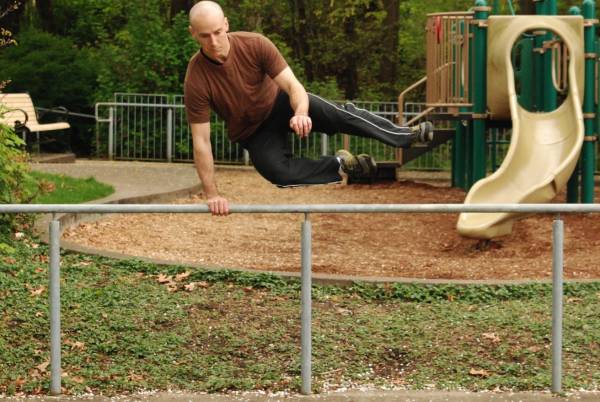
A Few Other Recommendations
- Try to “stack” your shoulders over the point of contact (your hand) as much as possible for the greatest stability and least effort.
- Be as silent as possible. Listen to your hand and foot contacts and work to be as soft as you can.
- Drill both sides. It’s inevitable you have a non-dominant side that will feel very awkward at first. Lead from both sides until you are proficient with the movement from both directions.
- As you gain confidence with each vault, begin to increase your approach velocity, going into and out of the movement with greater speed.
Give these vaults a shot and if you have any questions, please post to comments.






